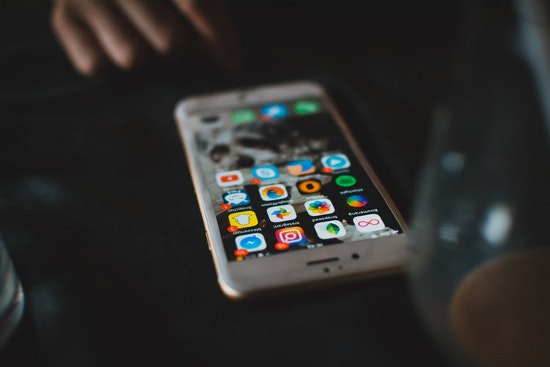The introduction of the smartphone in the early 21st century was a big leap in the field of communication and technology. After its release, it soon created a huge market of consumers who used it for personal and business communication, entertainment, and carry out vital tasks at the click of a few buttons.
It also attracted developers to build mobile applications that provide core functions like social networking, navigation, and web streaming. The key, however, is to create an app that is productive and provides a rich user experience.


Today, the mobile app market has become crowded. According to Statista, over 5 million mobile apps are available on the leading app stores for download. It is becoming exceedingly tough for developers to stand out from the crowd in the massive mobile app industry. Hence, there is a growing need for user research to know the customer’s expectations and understand their whims and wishes.
This post analyzes credible research studies and surveys that provide valuable insights into customers’ expectations from a mobile app. We will share the findings from these studies so that businesses can draw wisdom from it before they jump on the app development bandwagon.
Customers want ease-of-use:
Mobile users clearly want apps that make interactions with their favorite brands easier. According to the app analytics platform App Annie, there were around 194 billion app downloads in 2018, but more half of the users (51 percent) also deleted an app less than a week ago.
Why does the overwhelming majority of mobile users abandon using mobile apps? The reasons lie in poor usability and user experience. 76 percent of mobile app users want all brands and companies to develop apps that ensure ease of use.
Usability is one of the main reasons why a considerable number of mobile apps are being deleted from smartphones. Research from eMarketer suggests that 14 percent of mobile app users delete an app that is difficult to use. This reflects the fact that user experience and overall usability can guarantee the success of your app.
Ways to improve the user experience:
- Keep the design simple
- Avoid irrelevant in-app permissions
- Keep clicks and actions to a minimum
- Since a mobile phone does not benefit from an external keyboard and a mouse, users favor scrolling over clicking
- Provide effortless search option
- Add transparency to the app
Yelp, the popular reviews and recommendations forum, has everything under control when it comes to user experience. The app uses your current location, search filters, and Google Map to help users refine their search and limit it to a desired geographic region. PayPal is another popular example of an app that has simplified the mobile app experience. It uses reduced content and positions it in a way which creates perfect context and adds value to the users’ experience.
The need for speed:
Customers’ expectations for faster loading times and improved performance have increased as our reliance on mobile apps increases. A survey from Dimensional Research found that users are becoming impatient and want mobile apps and sites to load almost instantly. The survey revealed that more than 60 percent of users want a mobile app within 4 seconds.
A separate survey found that roughly 80 percent of mobile app users expect their app to load in 3 seconds or less. While the figures fluctuate based on their source, the irrefutable reality is that mobile app users want apps with fast loading time.
These above mentioned stats are in coherence with the case studies of BBC and Walmart regarding the page loading times. After improving their loading time by a second, Walmart saw a 2 percent rise in their conversion rates.
Most of the apps, unfortunately, have loading times of more than 3 minutes. This is probably due to large image files, faulty servers, defective codes, and bugs. These vulnerabilities on the developers’ end not only slows down the loading speeds but also put your personal data at risk. Make sure you use trustworthy apps like WhatsApp with end-to-end encryption or Airg Spam free apps to enjoy social privacy with faster loading times.
Ways to improve your app loading times:
- Compress large images
- Avoid unnecessary redirects
- Avoid down or disconnected servers
- Test your software development kits
- Remove bugs and errors from code
Users want a personalized experience:
When developing a mobile app, it is crucial to provide a personalized user experience. The reason why personalization is important is because users demand it. A January 2019 survey of consumers in the U.K., U.S., and Canada found that more than 63 percent of consumers expect a personalized experience from brands. A study by eMarketer also reported that 44 percent of users would switch to a brand that provided a more personalized user experience.
Given the crowded market space, it is essential that you distinguish yourself from your competitors. And personalization is the best way to achieve this distinction.
Ways to achieve personalization:
• Utilize demographics and the users’ current locations
• Track the user’s behavior in the app
• Serve products or content based on previous browsing and purchase history
Netflix is an excellent example of app personalization, as it recommends shows based on members’ watch history. As a member watches a title, the app recommends them shows in a similar genre.
The app should be affordable:
A small number of users are willing to pay for an app download because the overwhelming majority of mobile apps on the app stores are free apps. Also, the majority of the app downloads are free; hence, if you plan to roll out a paid app, make sure it provides value for the money.
A survey conducted by Zogby Analytics in which they polled 1,015 mobile app users found that 58 percent of the respondents preferred free apps supported by in-app purchases to apps that required payment.
Since there are thousands of apps available with the features almost similar to those of paid apps, it becomes tougher for developers to convince customers to purchase a paid app.
Ways to handle app monetization:
- Offer both a free and paid version of your app with extensive features included in the latter
- Offer incentives such as coupons and bonuses to lure customers into paid downloads
- Publish a free app with in-app purchases
- Make money through in-app advertisements
Conclusion:
Mobile app usage has increased enormously in the past decade. The average user spends more than 2 hours each day using various apps. Follow these guidelines to ensure that your app is one of them.









